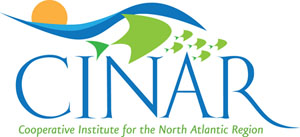Plan: coordinate marine regulators
In big news for the Gulf of Maine community, President Obama, on July 19, signed an executive ordering establishing a national ocean policy. The new policy went into effect just over a year from the date the President charged the heads of federal agencies that have ocean-related missions with the task of coordinating government responsibilities for managing the nation’s ocean resources.
“At its most fundamental level, the new national ocean policy brings attention to four issue areas that are important to Maine and to New England—climate change, the link between land use and water quality, information and data collection and ecosystem protection and restoration,” said Kathleen Leyden, Director of the Maine Coastal Program at the State Planning Office.
On any given day, the Gulf of Maine supports hundreds of different uses, ranging from a quick, quiet kayak trip along a protected shore to the passage of an enormous tanker bearing hundreds of thousands of gallons of oil. Fishermen work the waters of the Gulf’s banks and shoals, whale watch boats track down its largest inhabitants, and scientists tow and tether the latest in ocean monitoring technology to track currents, winds and oceanographic conditions. Dredge spoils are dumped, yachts races are contested while fish, shellfish and seaweed are farmed—the list goes on and on.
National Policy for the Stewardship of the Ocean,
Our Coasts, and the Great Lakes
It is the Policy of the United States to:
- Protect, maintain, and restore the health and biological diversity of ocean, coastal, and
- Great Lakes ecosystems and resources;
- Improve the resiliency of ocean, coastal, and Great Lakes ecosystems, communities, and
- economies;
- Bolster the conservation and sustainable uses of land in ways that will improve the
- health of ocean, coastal, and Great Lakes ecosystems;
- Use the best available science and knowledge to inform decisions affecting the ocean,
- our coasts, and the Great Lakes, and enhance humanity’s capacity to understand,
- respond, and adapt to a changing global environment;
- Support sustainable, safe, secure, and productive access to, and uses of the ocean, our
- coasts, and the Great Lakes;
- Respect and preserve our Nation’s maritime heritage, including our social, cultural,
- recreational, and historical values;
- Exercise rights and jurisdiction and perform duties in accordance with applicable
- international law, including respect for and preservation of navigational rights and
- freedoms, which are essential for the global economy and international peace and
- security;
- Increase scientific understanding of ocean, coastal, and Great Lakes ecosystems as
- part of the global interconnected systems of air, land, ice, and water, including their
- relationships to humans and their activities;
- Improve our understanding and awareness of changing environmental conditions,
- trends, and their causes, and of human activities taking place in ocean, coastal, and
- Great Lakes waters; and
- Foster a public understanding of the value of the ocean, our coasts, and the Great Lakes
- to build a foundation for improved stewardship.
More recently, large-scale projects have been proposed for the Gulf, including LNG (liquid natural gas) facilities and pipelines, offshore wind farms, and networks of marine protected areas. The scale and scope of such proposals has aroused disputes that dwarf all other disagreements to date.
Conflicts among the uses of marine and coastal waters are nothing new—they most likely date to the earliest human settlement of the Gulf’s shores. Solutions to various disputes among incompatible activities abound: for example, nautical charts indicate harbor inbound and outbound travel lanes, warning off other boat traffic. But as the population inhabiting the Gulf’s shores has grown and demands upon its resources burgeoned, this ad hoc approach to solving disagreements has taken more and more time and money and proved less and less effective.
Addressing conflicts one at a time fails to take into account the cumulative impact of various uses, focusing instead on site-specific solutions to local conflicts. Solutions achieved by negotiating compromise between disagreeing parties tend to reflect only the interests of the parties, not the broader interests of the public. Even the involvement of government agencies charged with protecting the public trust has not always improved outcomes.
The number of government programs that address marine issues, each created to address a narrow set of issues (e.g., fisheries management, environmental protection, oil and gas production, sand and gravel mining, protection of endangered species, etc.), reflects the array of competing uses on the water. Just as fish farmers find themselves in conflict with people concerned about the impact of such farms on their property values, government agencies find themselves in conflict with one another.
Five years ago, two major policy initiatives, the Pew Oceans Commission and the National Oceans Commission, conducted in-depth analyses of the state of our oceans. Among other findings, both groups identified the lack of coordination among agencies with ocean responsibilities as a major stumbling block to more effective management of our ocean resources. The Joint Ocean Commission Initiative was formed as an outgrowth of the two commissions in order to promote coordination of ocean policy and management activities across all federal agencies.
Shortly after taking office, President Obama tasked the White House Council on Environmental Quality with forming an Interagency Ocean Policy Task Force for the purpose of drafting a national ocean policy to address the concerns raised by the commissions. The charge to the Task Force was to develop “recommendations to enhance our ability to maintain healthy, resilient, and sustainable ocean, coasts, and Great Lakes resources for the benefit of present and future generations.”
Nancy Sutley, Chair of the White House Council on Environmental Quality, noted that “President Obama recognized that our uses of the ocean are expanding at a rate that challenges our ability to manage significant and often competing demands. With a growing number of recreational, scientific, energy, and security activities, we need a national policy that sets the United States on a new path for the conservation and sustainable use of these critical natural resources.”
The new National Ocean Policy (see accompanying story) is the first in our nation’s history and provides guidance for the protection and development of the US Exclusive Economic Zone, which at 470,000 square miles (12,175,000 square kilometers), is the largest in the world. Implementation of the new policy is described in the Final Recommendations of the Ocean Policy Task Force. A new National Ocean Council will be established to coordinate Federal action on the oceans and to address several priority objectives ranging from ecosystem-based management and improved ocean observing to adaptation to climate change and enhanced water quality.
The mechanism for achieving these objectives is a comprehensive planning framework based on mapping of resources and uses, a process known as coastal and marine spatial planning (see previous GOMT article?). US waters are divided into nine regional planning areas, including the northeast, encompassing the Gulf of Maine. Regional planning bodies will be formed to develop and implement coastal and marine spatial plans for each region.
What does all this mean for the Gulf of Maine?
It directs federal agencies to articulate how they will work together on these issue areas and calls for an ecosystem approach, transparent decision-making, increased coordination support and a focus on proactive planning. In my time in coastal planning there has never been such a high-level focus on oceans and coasts in the United States.
“Front and center in the policy is the call for regional marine coastal and marine spatial plans. Massachusetts and Rhode Island now have comprehensive plans for ocean uses and Maine has used spatial planning processes for citing ocean energy demonstration sites,” Leyden said. As one of several policymakers engaged in bringing the lofty principles of the new policy to bear on issues of importance to New England, Leyden is focused on the call for comprehensive planning.
“How marine spatial planning will unfold in New England, how stakeholders will be involved and how we can use coastal and marine spatial planning as a tool that works for us are subjects that are getting a lot of thought right now. The opportunity in this is a promise of new and more sophisticated data for decision-making and an opportunity to customize an approach that works for New England.”
Leyden and other policymakers in the region are working together to decide how best to form a regional planning body for the Northeast. Several organizations already exist that fit the bill in part for a regional planning body. The Northeast Regional Ocean Council (NROC) was created by the six New England Governors in 2005 to coordinate coastal and ocean activities and programs across New England. It includes federal partners representing those agencies with a coastal or marine focus. The Gulf of Maine Council on the Marine Environment represents Maine, New Hampshire and Massachusetts as well as New Brunswick and Nova Scotia. And the Northeast Region Association of Coastal Ocean Observing Systems (NERACOOS) provides real time weather and ocean data to fishermen, commercial shippers, and other mariners.
David Russ, Eastern Regional Geologist with the Department of the Interior’s United States Geological Survey, is a member of NROC. For Russ, the issue is building on the planning capacity that already exists in the region: “how do we align the priorities of the National Ocean Policy with those of NROC, the Gulf of Maine Council and NERACOOS?”
Looking ahead to development of a coastal and marine spatial plan for the northeast, Russ says NROC is asking the right questions: “What is the best planning group? How do the Gulf of Maine Council and NERACOOS fit in? How do states’ interests get reflected? How do other interests get involved?”
At the same time, Russ notes that it is important to “identify the data and information we will need” to support the planning process. The bottom line, he says, is to “make sure our oceans, estuaries and coastal areas are looked after and used as wisely and responsibly as possible.”
While implementation of the National Ocean Policy is just getting off the ground, it is not too soon for stakeholders in the region to get involved by following developments through their state government, NROC or the Council on Environmental Quality. Public participation in the development of a coastal and marine spatial plan for the northeast is required under the new policy and will be crucial in ensuring that the plan is grounded in the ecological, social and political realities of the region.
“There are both challenges and opportunities for Maine and New England in the new policy,” said Leyden. “States have for years asked the myriad federal agencies that regulate ocean activities to work in a coordinated fashion on ocean and coastal management. I think there is widespread agreement that single-purpose statutes and programs that administer them have not solved the problems of the oceans and coasts and the people that depend on healthy marine resources. So, there is a lot of promise in the new policy, but the devil will be in the details including issues like state, local, industry and citizen involvement in the new National Ocean Council, funding, and unknowns about how new national policy will be carried out.”
Links:
Joint Ocean Commission Initiative:
http://www.jointoceancommission.org
Interagency Ocean Policy Task Force:
http://www.whitehouse.gov/administration/eop/ceq/initiatives/oceans
Executive Order – Stewardship of the Ocean, Our Coasts, and the Great Lakes:
http://www.whitehouse.gov/the-press-office/executive-order-stewardship-ocean-our-coasts-and-great-lakes
Final Recommendations of the Ocean Policy Task Force:
http://www.whitehouse.gov/files/documents/OPTF_FinalRecs.pdf
Northeast Regional Ocean Council (NROC):
http://collaborate.csc.noaa.gov/nroc/default.aspx
Northeast Region Association of Coastal Ocean Observing Systems (NERACOOS):
http://www.neracoos.org/
Anne Hayden is an independent marine policy consultant based in Brunswick, Maine.
Print


















